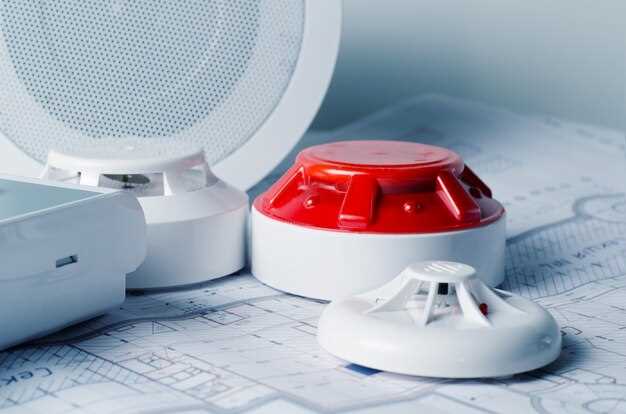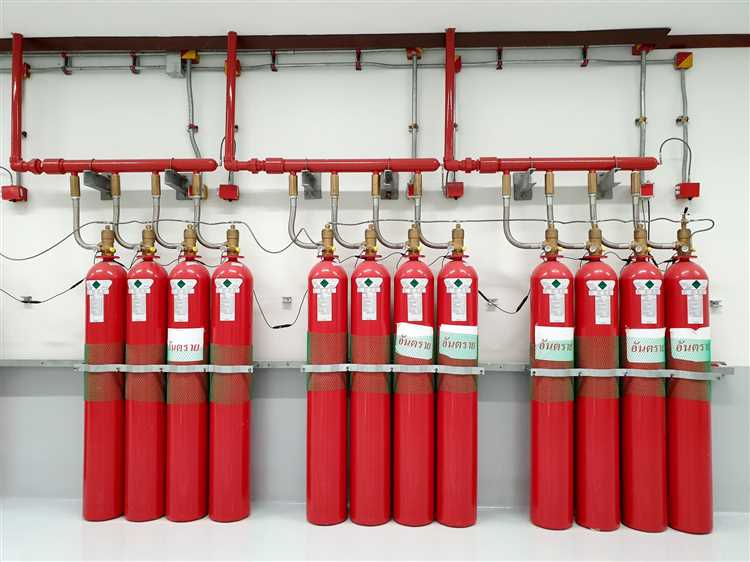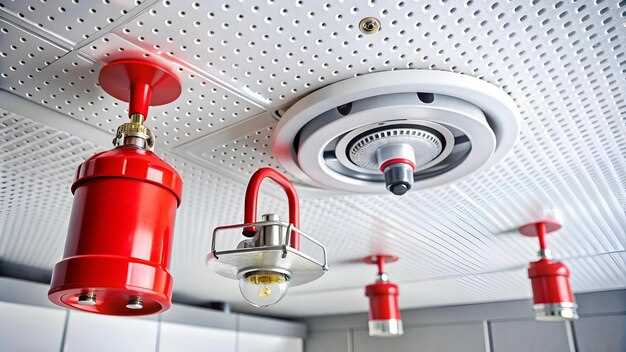
In today’s world, the implementation of effective fire suppression systems is crucial for ensuring safety in both residential and commercial environments. These systems play a vital role in preventing fire-related disasters and protecting lives and property. Understanding the critical aspects of installation and adherence to established safety guidelines is essential for the successful operation of any fire protection strategy.
Properly installed fire suppression systems not only track the occurrence of potential fire hazards but also provide immediate response capabilities, significantly reducing the likelihood of severe damage. This article will delve into essential aspects of installation processes, including system design, equipment selection, and compliance with local regulations. Moreover, we will highlight key safety guidelines that organizations and homeowners must follow to ensure their fire systems operate at the highest level of effectiveness.
As we explore these guidelines, it is imperative to consider the variety of fire suppression systems available, each tailored to specific environments and fire risks. Whether it is a residential sprinkler system or a commercial kitchen suppression system, understanding their unique characteristics will help in selecting the most appropriate solution. Through this article, readers will gain valuable insights into maintaining safety and reliability in their fire protection measures.
Selecting the Right Fire Suppression System for Your Needs

Choosing the appropriate fire suppression system is crucial for ensuring safety and compliance with local regulations. The selection process begins by assessing the environment where the system will be installed. Different environments, such as commercial kitchens, industrial facilities, or residential buildings, require specific types of suppression systems tailored to the potential fire hazards present.
One key factor to consider is the type of fire risks associated with your space. Class A, B, C, D, and K fires each require different systems, as they involve different materials and ignition sources. For instance, kitchens are prone to grease fires, necessitating a specific kitchen hood suppression system that adheres to NFPA (National Fire Protection Association) standards. In contrast, industrial settings may benefit from foam or chemical suppression systems designed for flammable liquids.
Another essential consideration is the size and layout of the area. A robust fire suppression system must provide adequate coverage for the entire space while adhering to the installation rules dictated by local fire codes. Conducting a thorough risk assessment can help identify the most suitable system configuration and the placement of extinguishing agents to maximize effectiveness.
The choice of system also involves evaluating water supply availability and pressure. For systems relying on water, such as sprinklers, a reliable water source is essential. If water pressure is a concern, alternative systems, such as clean agent or foam systems, may be more suitable. Additionally, potential environmental impacts and the system’s operational limits during emergencies should be analyzed as per safety regulations.
Seeking expert guidance is recommended to navigate the complexities of fire protection requirements. Consulting with fire safety professionals can provide insights into the latest technologies and help ensure compliance with current safety standards and rules. Properly selecting and installing the right fire suppression system can significantly mitigate risks and enhance overall safety in your environment.
Key Installation Steps for Fire Suppression Systems

Installing a fire suppression system requires meticulous planning and adherence to specific rules to ensure optimal functionality and safety. The following steps outline the critical phases in the installation process.
| Step | Description |
|---|---|
| 1. System Design | Evaluate the facility’s layout and determine the most effective fire suppression system type, ensuring it meets local codes and regulations. |
| 2. Risk Assessment | Conduct a thorough risk assessment to identify potential fire hazards, which will help in customizing the system to address specific needs. |
| 3. Installation Plan | Create a detailed installation plan that maps out where equipment will be placed, taking into account access points and obstacles. |
| 4. Equipment Selection | Choose high-quality components designed for the selected system type. This may include fire extinguishers, sprinklers, and detection systems. |
| 5. Mounting and Placement | Follow the installation plan closely, ensuring that all components are mounted securely in their designated locations. Maintain proper clearance for effective operation. |
| 6. System Connections | Connect the system to water sources, gas lines, or chemical agents as per the guidelines established in the design phase. |
| 7. Testing and Commissioning | Conduct a series of tests to ensure the system operates correctly. This should include functional tests and system pressure tests. |
| 8. Documentation and Training | Document all installation procedures, and provide training for personnel on how to operate the system effectively and safely. |
By closely tracking each of these steps and adhering to established rules, you can ensure that your fire suppression system is properly installed and functioning, ultimately contributing to the safety of your facility.
Maintenance Requirements for Fire Suppression Systems
Regular maintenance of fire suppression systems is essential to ensure their reliability and effectiveness in the event of a fire. Adhering to specific rules and guidelines helps facility managers track the system’s functionality and compliance with safety standards.
- Conduct routine inspections:
- Perform monthly visual checks to ensure no obstructions or damage are present.
- Verify that all control panels and alarms are functioning correctly.
- Scheduled servicing:
- Follow the manufacturer’s recommended maintenance schedule, which typically includes servicing at least once a year.
- Inspect and test all components, including extinguishers, nozzles, and piping.
- Documentation:
- Keep accurate records of all inspections and maintenance activities.
- Track any repairs made and the dates of service, ensuring historical data is available for review.
- Training and drills:
- Train staff on the proper usage of fire suppression systems and what to do in case of activation.
- Conduct regular fire drills to ensure all personnel are familiar with emergency procedures.
- Compliance and updates:
- Stay informed about local fire safety regulations and national standards.
- Update the system as necessary to comply with any new rules or technological advancements.
By adhering to these maintenance requirements, facility managers can effectively track the performance and readiness of fire suppression systems, ensuring a safer environment for all occupants.
Understanding Local Codes and Regulations for Fire Safety
When installing fire suppression systems, it is crucial to be aware of the local codes and regulations that govern fire safety. These codes serve to protect lives, property, and resources by ensuring that fire protection measures are effective and compliant with established standards.
Local authorities typically adopt codes from national standards, such as the National Fire Protection Association (NFPA) guidelines. However, they may also have specific amendments tailored to regional needs. Before beginning any installation, it is advisable to track the specific requirements applicable in your area, as they may dictate aspects such as system design, equipment specifications, and installation procedures.
Engaging with local fire marshals or building inspectors can provide valuable insights into the required permits and inspections necessary during and after the installation process. These officials often assess whether the fire system meets the jurisdiction’s fire safety regulations. Additionally, failure to comply with local codes can result in penalties, delays, or even the revocation of the system’s approval.
It is also essential to consider ongoing maintenance and inspection regulations. Many jurisdictions require regular checks to ensure that the fire suppression system operates correctly and remains compliant with changing codes. Staying updated on any modifications to local regulations will help maintain compliance and enhance overall fire safety.
Training Staff on Fire Suppression System Operation
Proper training of staff on the operation of fire suppression systems is crucial for ensuring safety and effective response during emergencies. Understanding the various components of the system, including alarms, extinguishers, and hoses, enables employees to react promptly and appropriately when a fire occurs.
Training sessions should incorporate the basic rules of fire safety, emphasizing the importance of maintaining a clear path to exits and effectively using fire suppression tools. Staff must be familiarized with the specific type of system installed in their facility, as different systems such as sprinkler, foam, and gas-based suppression have unique operating mechanisms and limitations.
Hands-on training is essential. Simulated fire scenarios provide employees with practical experience in using the fire suppression system. This not only reinforces their understanding but also builds confidence in their ability to act decisively in a real emergency.
Regular refresher courses and drills should be scheduled to keep knowledge current and to address any updates in fire safety regulations or system technology. Establishing a culture of safety, where team members understand the role of fire suppression systems, significantly enhances overall preparedness and response efficiency.
Documentation of training programs and attendance is vital. This ensures compliance with safety regulations and provides a reference for performance evaluations. In conclusion, comprehensive training on fire suppression system operation forms the backbone of an effective fire safety strategy, safeguarding both personnel and property.
Regular Testing Protocols for Fire Suppression Systems
Regular testing of fire suppression systems is crucial for ensuring their reliability and effectiveness in emergency situations. Implementing a structured testing protocol helps to track the operational status and compliance of these systems with safety standards.
All types of fire suppression systems should adhere to specific testing protocols, including:
- Visual Inspection: Conduct routine checks of the system components, looking for signs of wear, corrosion, or damage.
- Functionality Testing: Test the system’s activation mechanism to ensure it operates correctly. This includes testing alarms and emergency signals.
- Flow Testing: Measure the water flow rate and pressure to guarantee that the system can deliver adequate suppression agents during a fire.
- Agent Integrity Check: Inspect suppression agents for effectiveness and ensure that they are within their approved shelf life.
- Control Panel Functionality: Ensure that the control panel is operational, displaying accurate status indicators of the system.
The frequency of these tests typically follows the guidelines established by local fire codes or national standards such as NFPA (National Fire Protection Association). Procedures may vary based on the type of system in use:
- Wet Pipe Systems: Should be tested annually for flow and pressure.
- Dry Pipe Systems: Require quarterly testing of air pressure and annual full system inspection.
- Foam Systems: Should be tested biannually, checking the foam concentrate and application systems.
Documenting each test is essential for tracking performance over time. Keeping detailed records facilitates compliance audits and helps identify potential issues before they escalate. Additionally, engaging licensed professionals for testing and maintenance ensures adherence to best practices.
In summary, consistent testing and monitoring of fire suppression systems are paramount. By following established protocols and maintaining thorough documentation, organizations can significantly enhance fire safety and operational readiness.




